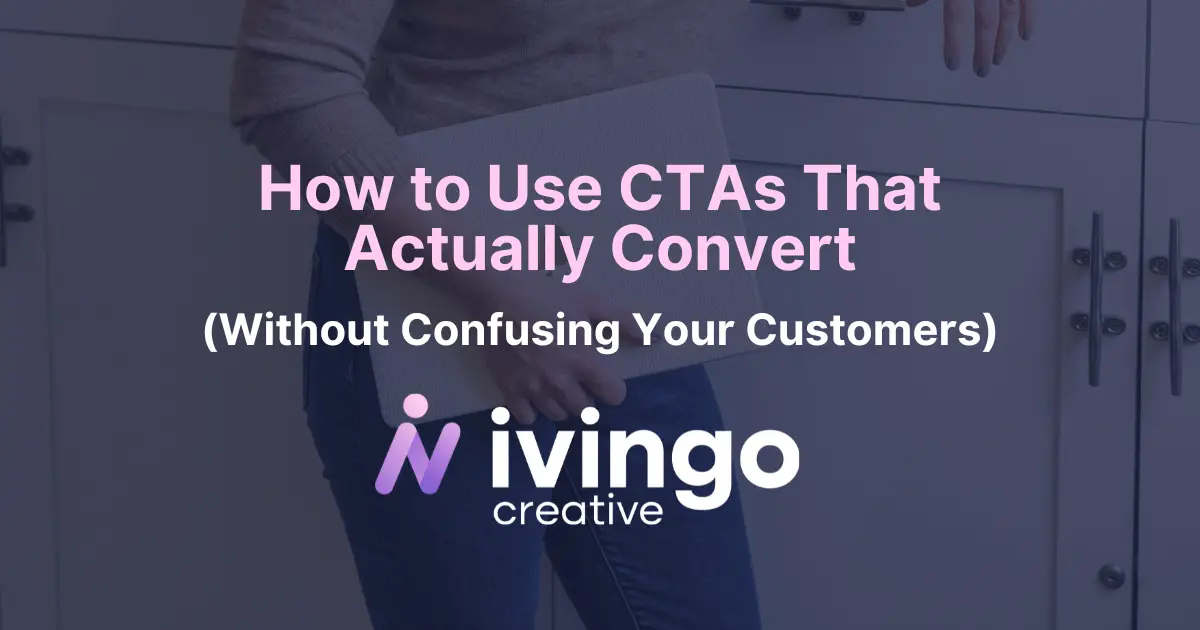A website’s call to action (CTA) is one of the most important elements for driving conversions. Yet, many business websites struggle with weak, confusing, or competing CTAs that leave visitors unsure of what to do next!
A strong CTA should guide visitors toward a clear next step, whether that’s booking a consultation, making a purchase, or downloading a resource. If your website is full of buttons that lead in different directions, you might be losing potential customers simply because they don’t know what action to take.
Let’s talk about how to structure your website so that visitors take action without hestitation by creating effective CTAs.
The Biggest Mistake Businesses Make with CTAs
One of the most common mistakes businesses make is treating their homepage like a menu of options instead of a direct path to conversion. When a website bombards visitors with multiple competing actions—like “Schedule a Call,” “View Our Portfolio,” “Check Out Our Blog,” and “Follow Us on Instagram”—it creates decision fatigue. Instead of making a choice, visitors often choose to do nothing at all.
A strong CTA strategy focuses on one primary action, repeated multiple times throughout the page, rather than overwhelming visitors with choices. This doesn’t mean your website should only have one button—it means that all roads should lead to the same destination. When there’s a single, consistent CTA, visitors are far more likely to take action.
Primary vs. Transitional CTAs: Why You Need Both
Not every visitor to your website is ready to take immediate action. Some are ready to buy, while others are still in the decision-making process. This is why having both a primary CTA and a transitional CTA is crucial.
A primary CTA is the main action you want your visitors to take. This should be clear, bold, and repeated multiple times throughout your homepage. If your goal is to book consultations, your primary CTA should consistently say something like “Schedule a Free Consultation.” If you sell a product, it might be “Shop Now” or “Start Your Free Trial.”
A transitional CTA is a low-commitment action that nurtures visitors who aren’t ready to make a purchase or commitment yet. This could be a free guide, an email signup, or a webinar registration—something that provides value while keeping them engaged with your brand. A good example might be “Download Our Free Guide to Website Conversions” or “Get Our Free Checklist for Small Business Growth.”
By offering both a primary and a transitional CTA, you give visitors a clear path forward no matter where they are in their buying journey. Those ready to take action can do so immediately, while those who need more time can stay connected without leaving your site empty-handed.
Where to Place Your CTA for Maximum Conversions
A CTA should never be buried in a single spot on your website. Instead, it should be strategically placed where visitors are most likely to take action. The best practice is to include it in multiple locations:
Top-right corner of the navigation bar – This is one of the first places visitors look. A bright, noticeable button here makes it easy for them to take action at any time.
Above the fold – The primary CTA should appear within the first section of your homepage, visible before visitors even scroll.
Throughout the page – If your homepage is longer, repeat the CTA after sections that explain your services, benefits, or social proof.
At the bottom of the page – Once a visitor has read through your content, they should be reminded of the next step before leaving.
When a CTA is visible and accessible, visitors don’t have to search for it or guess what to do next. The easier it is to take action, the more likely they are to do it.
What Makes a CTA Strong?
A CTA should be simple, direct, and action-oriented. Avoid vague phrases like “Learn More” or “Get Started” without context. Instead, focus on clear and specific language that tells the visitor exactly what will happen when they click.
For example, instead of “Contact Us,” say “Schedule a Free Call.” Instead of “Subscribe,” say “Get Weekly Marketing Tips in Your Inbox.” The more specific and compelling the CTA, the higher the likelihood that visitors will follow through.
The design of your CTA matters as well. It should stand out visually, using contrasting colors that draw attention without clashing with your brand. The button should be large enough to be easily clickable on both desktop and mobile, and the text should be short yet persuasive.
What to Avoid with CTAs
One of the biggest pitfalls with CTAs is making them blend into the rest of the website. If the CTA button looks like regular text or doesn’t stand out, visitors will scroll right past it. Similarly, using too many CTAs with different actions creates confusion, leading to lower conversion rates.
Another mistake is failing to create urgency. If there’s no reason for a visitor to take action now, they’ll likely delay making a decision—and might never return. Adding a sense of urgency, such as “Limited Spots Available” or “Get Your Free Guide Today,” can increase conversions.
CTA Best Practices for Higher Conversions
- Keep it clear and action-oriented—visitors should instantly know what they’re clicking on.
- Use a primary CTA consistently throughout the page.
- Include a transitional CTA for visitors who need more time.
- Make the CTA stand out visually with a contrasting button color.
- Place it in multiple high-visibility locations so visitors always have a next step.
- Create a sense of urgency to encourage immediate action.
Final Thoughts: Your CTA is the Key to More Conversions
Your website’s CTA is more than just a button—it’s the difference between a visitor leaving your site and a visitor becoming a lead or a customer. By simplifying your calls to action, focusing on one primary CTA, and offering a transitional CTA for those who aren’t ready, you make it easy for visitors to move forward.
At Ivingo Creative, we help small businesses create websites with high-converting CTA strategies that drive real results. If your website is struggling to turn visitors into customers, let’s talk about how we can fix that.



